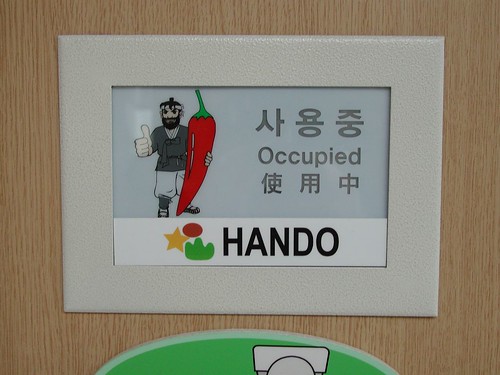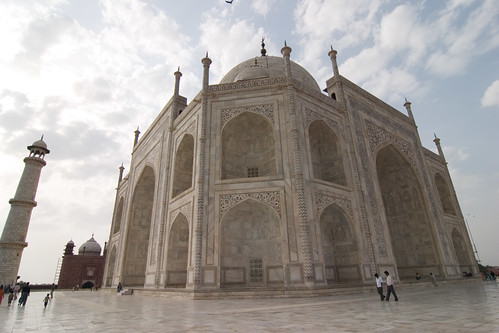prependum
shortly after writing this article I started using the Panasonic G1 camera. Where I had previously used my coolpix. The G1 is barely larger than the Coolpix, perhaps more fragile than the coolpix but weighs about the same. So as a packing camera its got the most important criteria ... low weight and high quality. Not only does the G1 exceed the image quality of any digital camera I've ever had its compatible with a wide vareity of lenses by adaptor. Please read about my experiences with this camera perhaps starting here.
If you enjoy
taking your camera with you on hiking trips rather than hiking to take your camera gear somewhere then I'm sure that you've wondered just what camera should you take along. Of course you can carry a
6x9 film camera or even a 4x5 (that's inches folks) field camera, but it might be more of the case of taking your pack hiking to carry your camera.
(
a curve ball for the open minded is an older "folder" 120 film camera like this. For around $100 used 20 megapixels is obtainable, used right I think you'll be amazed with the results ... if you can tolerate using film).
I'm personally always torn between the desire to carry less and the desire to have the best image quality. The major considerations are
- weight
- size
as a trade off with a useful and good picture quality camera.
After struggling with choices years ago in 35mm cameras I settled on a backpacking choice of a single light body with 24mm and 50mm lenses. I use Canon 35mm cameras and there were a number of good (and light) bodies to choose from. I could put my EOS 1000 into my backpack at a cost of only 500g and both my lenses (EF50 f1.8 = 190g and EF24 f2.4 = 270g) are light and produced great image quality.
Then along came digital and I started to use a compact Canon IXY 20 which weighing only around 200g
with a lens opened my eyes to what compact should be. Images were totally fine for web and email (my
entire site when I lived in Japan was done with compact digital) but lacked the ability to make decent prints when you had an "ohh that's nice" picture which begged to be printed to at least A4 size and put up on the wall.
Like this:

Luckily I had my 4x5 film camera on this day ... so I didn't have to make any compromise (well actually I planned to go there and take this photograph so it wasn't just an accident). So I was hooked on compact convenience but often needed more.
I eventually started using a
Coolpix 5000, which gave me image quality nearly as good as low resolution scans of 35mm film
and with compact and digital convenience. Eventually I bought a 10D and tried using my Canon EF lenses on that, but this left me a little disappointed as the sensor is not the same size as film resulting in different behavior of the lens (24mm is no longer wide).
When compared to the coolpix 5000 the 10D edges ahead in picture quality but only just!! Here is 2 segments from each (as discussed in the above article), can you see a clear distinction?


I can't see much, and unless you're printing right to the maximum size (32.5 x 24.4 cm in the case of the CP5000) you just won't see it in prints and you certainly won't see it when resizing for the WWW.
Now these are both older cameras (with the 10D being newer than the CP5000), todays cameras are better (just compare them in DPReview). The high quality compacts of today are better than the equivalent compacts of 2001, so this comparison (to the date of writing) remains consistent.

What hasn't changed much is the size relationships. So as long as you get a compact which produces quality images (and there are a some) then for a hiking camera you don't really stand to benefit all that much in images, but its the lump in your hand that you really see (and feel) the difference between a DSLR and a compact.
If you've been scouring DPReview for your comparisons between cameras you may be used to looking at their presentation style of images. So I've put a comparison of both cameras here in the photo to the right to make it clear just how much difference there is between a DSLR like the 10D and a compact.
They don't just look different, they feel different. Its not just numbers and pictures when you hold them in your hand.

Here is a DPReview-esque side by side view. While there is not an obvious difference in image quality
there is rather an obvious one in size.
Not only does a DSLR like the 10D
look humongous compared to the little 5000
it weighs nearly double too, around 800 VS 415 grams and still no lens!
Its at the point when you're packing your backpack that you ask yourself, will I prefer to carry the bulk or the compact?
I find that people seem to get lost in details when choosing their cameras. I regularly read many camera forums and see people getting caught up over issues like 10th of a second difference in '
shutter lag' or is the viewfinder really sharp and responsive.
When really at the end of the day its the pictures which you will be looking at after the trip.
If your camera stays in the middle of your pack(because its annoying to stop and ferret it out) rather than taking pictures what good is it?
If you like to take landscape images there is a good chance that you'll also be
someone who prefers wide angles. The CP5000 has an effective
28mm wide angle. So to get similar results on the 10D
I need to use a lens which is 17mm. There are lighter lenses than my
Tokina 12-24 lens (the one mounted on the 10D in the above image) which
weighs more and is bigger than my CP5000 (but not all fit my 10D and either don't perform well or cost nearly a thousand bucks).
At 560g it weighs more than my 24 + 50mm lenses combined and in my opinion is not as versatile bright or sharp.
So it seems that while DSLR cameras offer some advantages, once you're used to the paradigm shift of compact and fully functional cameras why would you want to take
the boat anchor?
Keep in mind that before digital that 35mm was the best quality minature camera you could buy, that was the reason that it became so popular! Makers like Pentax (
MX and LX series) and Olympus (
OM series) made excellent 35mm SLR cameras which were so compact that they were barely larger than compact cameras. They had superb optics and were great photogrpahic tools. You don't realise how compact these cameras are until you hold one. I'd show you a comparison except mine was stolen a few years ago.
Anyway, in reality if you're
not doing sports or some other specialized field of photography you simply don't need an SLR camera (and if you are, then leave that at home on hikes and take a good compact!). So if you can get past the "need" to have a DSLR for your hiking camera you need to look for a camera that has:
- Good image quality (not just megapixels, often 6 is enough)
- RAW image capability
- compact size and weight
- flexible viewfinder options
- good camera controls (there are really only three: shutter, aperture and focus)
- rugged design
Just to get you started here are a few cameras (of the many which) which I think fit the bill well
- Nikon Coolpix 5000 (perhaps even the later P5000)
- Canon G series compacts (5, 6, 7, 8, 9 10)
- Sigma DP1 or 2 (so many professionals are praising the big high quality sensor in this one)
- Ricoh GRII
- perhaps soon the Micro 4/3's cameras which are smaller as they are not reflex cameras (the R in SLR).
When it comes to what makes a good digital camera for image quality one of the most important things (and least marketed) is the size of the sensor, if you read
this article, I try to explain some of the issues around sensor sizes and cameras.
Lastly I'll suggest that if you want to consider getting a
good 35mm compact camera to take along you will be surprised at what they can do to capture a scene on a sunny day. Compacts like the
Olympus trip 35 and
Nikon 35 Ti are very capable cameras and can produce images which can rival that from the DSLR (
Ken Rockwell has even posted his findings). This is no exaggeration, as simple maths tells us that
a 2400dpi scan of 35mm film (which is 36x24mm) is around 8 megapixels.
I'll leave you with an image taken by a friend of mine with an Olympus trip 35 in 1974. This shows just how well you can capture scenery with a compact camera.

enjoy
 Its been a little while since I was in South Korea (and quite a bit has happened since then too) but as I was browsing through my images I came across a few that reminded me that I should put up some more of my experiences there (and perhaps help the tourist trade a little bit). My older pages on my last trip there (where I stayed for 4 months) are here.
Its been a little while since I was in South Korea (and quite a bit has happened since then too) but as I was browsing through my images I came across a few that reminded me that I should put up some more of my experiences there (and perhaps help the tourist trade a little bit). My older pages on my last trip there (where I stayed for 4 months) are here.



























